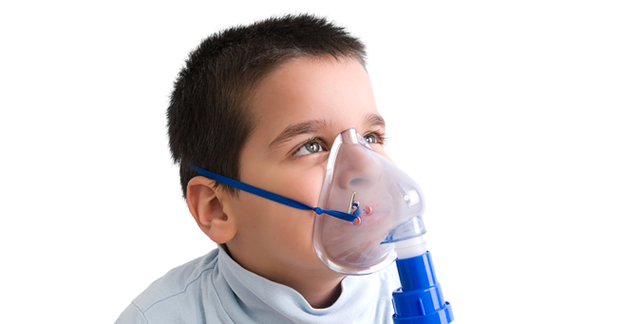Can giving my child corticosteroids every day for kids’ asthma be safe?
How can losing weight help my child’s asthma?
Why does my child seem to have a dangerous asthma attack every September?
Nearly 10% of all US children have asthma, and the number rises each year for unknown reasons. Asthma is the number 1 cause of school absenteeism. In fact, every day 36,000 children miss school because of asthma. Asthma, the most common disease in America today, is both chronic and genetic.
For a variety of reasons, asthma attacks seem to flare as children head back to school. September is the month with the greatest number of ER visits by children experiencing asthma attacks. There are several possible reasons for this “September Spike,” as doctors have termed the uptick. Some parents view the summer as a time when they can give their asthmatic child a break from their daily steroids. While asthma doesn’t go away in summer, some symptoms do seem to subside.
Browse This Article
Warning Signs of an Kids’ Asthma Attack
Here are some of the contributors and warning signs of an asthma attack:
- seasonal pollen from trees and plants
- poorly controlled asthma
- prior exacerbation (past year, past 3 months)
- lower pulmonary function
- success of treatment with ICS (inhaled corticosteroids), LTRA (leukotriene receptor antagonists) or ICS/LABAs (inhaled corticosteroids/long-acting beta agonists)
- exercise-induced asthma
- smoke from cigarettes or fire
When children return to school, they may not have resumed their daily medicine routine, making them more susceptible to common triggers. Another theory is that summer lowers the “herd immunity” factor, so that when students return to school and are exposed to viral infections, their bodies have less resistance to fight. For this reason, once school starts, children should be reminded to wash their hands frequently during the day. Some experts also theorize that because air conditioners in school were off all summer, they may have collected dust, a common trigger for many asthmatics.
Experts note that there are several steps parents can take to avoid having their child fall victim to asthma’s “September Spike.”
“If parents stop asthma meds in the summer, restart them when you buy school supplies,” suggests Bruce G. Bender, PhD, Head, Division of Pediatric Health, National Jewish Health in Denver. It takes about 3-4 weeks to put in place the full benefits of inhaled steroids.
Bender also points out that full compliance with prescribed medication dosages is key to keeping asthma at bay.
When a Medication Dosage Can Be Lowered
While asthma is chronic, it is also episodic. If your child has been symptom-free for a while, your healthcare provider might suggest lowering his or her steroid dose for a period of time. There are indications doctors use to see if it is possible for a child to try a lower dose. These include sleeping through the night, not needing to use the rescue inhaler and climbing stairs easily.
But asthma will come back because it’s chronic. The recurrence could be triggered by a cold, budding trees, exposure to an allergen like cat dander, smoke or dust, or something unknown, so constant vigilance is needed.
Bender warned that many pediatric asthma exacerbations can be traced to treatment nonadherence. He reported that patients who fill their prescriptions take about half their medication, a quarter of prescriptions are never filled, and as many as half of patients abandon treatment at some point.
Lisa Cicutto, RN, ACNP (cert), CAE, PhD, Director of Community Health at National Jewish Health and a professor at the University of Colorado, recommended meeting with your healthcare provider during the summer for a tune-up — get asthma assessed and develop a school plan that encourages participation in physical activity in PE and recess. Too many children use fear of asthma attacks as an excuse to skip gym and playtime, which promotes a vicious cycle that can potentially lead to weight gain. 40% of children and youths with asthma don’t participate in PE class, said Cicutto. In general, most kids with asthma can participate fully in sports and play.
Parents can also help to alleviate the “September Spike” by encouraging their children to wash their hands and avoid common asthma triggers: dust, seasonal pollens from trees and plants, and smoke from cigarettes or fire.
The Kids’ Asthma-Obesity Connection
Cicutto also points out that parents should be aware that obesity is a risk for asthmatic children. If your child’s BMI is high (body mass Index of 25 or more), there is an increased likelihood of asthma by 1.3 to 1.6 times. A vicious circle often ensues as children with asthma avoid activity and gain weight, which can exacerbate their asthma. Obesity is a problem for all children but particularly for those with asthma, notes Cicutto:
- 30% of youth without asthma are obese
- 45% of youth with asthma are obese
Cicutto notes that obesity increases the severity of asthma symptoms. Excess weight limits breathing capacity because overweight children (and adults) carry fat as a “girdle” around the middle therefore causing an underexpansion of the lungs. She points out that 75% of ER visits for asthma are for people who are obese.
Another thing to keep in mind: Hormones affect asthma. One study shows that if you have a daughter, expect asthma symptoms to increase at puberty, while your son may experience a decrease in his wheezing and coughing at that time.
Daily Nebulizer Use Is Critical
Can inhaling steroids every day be safe for a child? Most children with moderate to severe asthma have to use a nebulizer daily. This device delivers vaporized steroids directly to the child’s air pathways to lower inflammation. But aren’t steroids dangerous?
Corticosteroids are powerful and effective drugs which, in large doses, can cause significant long-term effects. In general, steroids fall into 2 categories: anabolic steroids, which bulk up muscles and are infamous for their misuse by baseball players and body builders, and corticosteroids, which reduce inflammation. (For more information see “Long-Term Effects of Anabolic Steroids” and “Long-Term Effects of Corticosteroids.”)
Inhaled steroids will help manage the symptoms of asthma but they can’t alter its course. By using a nebulizer, the dosage of corticosteroids is limited and the amount of inflammation in the throat, lungs and nasal passageways stays low, so the child suffers fewer asthma attacks. The benefit to using highly targeted, small amounts of corticosteroids daily is to avoid or minimize the times that emergency inhalers are needed for minor asthma attacks; this targeted approach also lessens the need for body-wide doses of oral steroids that are required to quell a severe asthma episode.
Parents should aim to limit the need for oral steroids for children so they can minimize any negative effects on their long-term health. The side effects of oral steroids are significant and include aggression, agitation, anxiety, depression, shortness of breath (great for a kid with asthma!), numbness in the limbs and more. Oral steroids work by suppressing all inflammation throughout the body, not only in the airways, which is why the targeted and limited approach offered by the nebulizer is advantageous.
The side effects and long-term effects of corticosteroids used in nebulizers to manage asthma is generally considered acceptable given the great danger of uncontrolled asthma. One concern is that corticosteroids may delay growth. Additional side effects can include mouth and throat irritation and oral yeast infections.
For more videos on using an inhaler correctly, visit the CDC website
According to the Mayo Clinic, an inhaler with a spacer, which slows and evens out the delivery of medicine into the back of the throat can help: “Use a spacer and rinse your mouth with water after each use to reduce the amount of drug that can be swallowed and absorbed into your body,” notes the website. The CDC has a set of videos on how to use an inhaler, including this one on how to use an inhaler with a spacer.
One experienced doctor noted that before some of the newer medications were introduced, it was very difficult to manage asthma. When he was working at National Jewish Health, Stanley Szefler, MD, Director, Pediatric Asthma Research Program, Children’s Hospital Colorado, treated many older children who had used corticosteroids for asthma episodes in large doses for years. Not long ago this approach was the only option available to manage severe asthma. Dr. Szefler found that poor management of asthma can lead to other diseases. Prednisone and other steroids commonly used for asthma block allergic inflammation and can suppress the immune system when administered in high daily doses; these powerful drugs also blocked the inflammation children needed to heal from other attacks on the body from cuts, broken bones or infection. Overuse of prednisone can lead to other problems such as glaucoma, cataracts, osteoporosis, diabetes and mood swings. In his patients who needed to use oral prednisone frequently over many years — those who had limited access to healthcare or did not respond well to conventional therapy — “steroid’s adverse effects seem to have created structural damage to the immune system that couldn’t be fixed,” noted Dr. Szefler.
Today, however, with careful monitoring, kids’ asthma can be managed and the side effects of corticosteroids can be better controlled. It’s important to keep up-to-date with your pediatrician or health care provider because there are a new group of medicines for asthma working their way through the FDA approval process right now. For information on specific drugs used for asthma, read Asthma: Fast Facts. Much research is being done on biomarkers, which can allow doctors to uniquely target medicine for each individual patient. Hopefully these medical advancements, along with parents’ vigilance, will increase the health and well-being of all asthmatic children.






